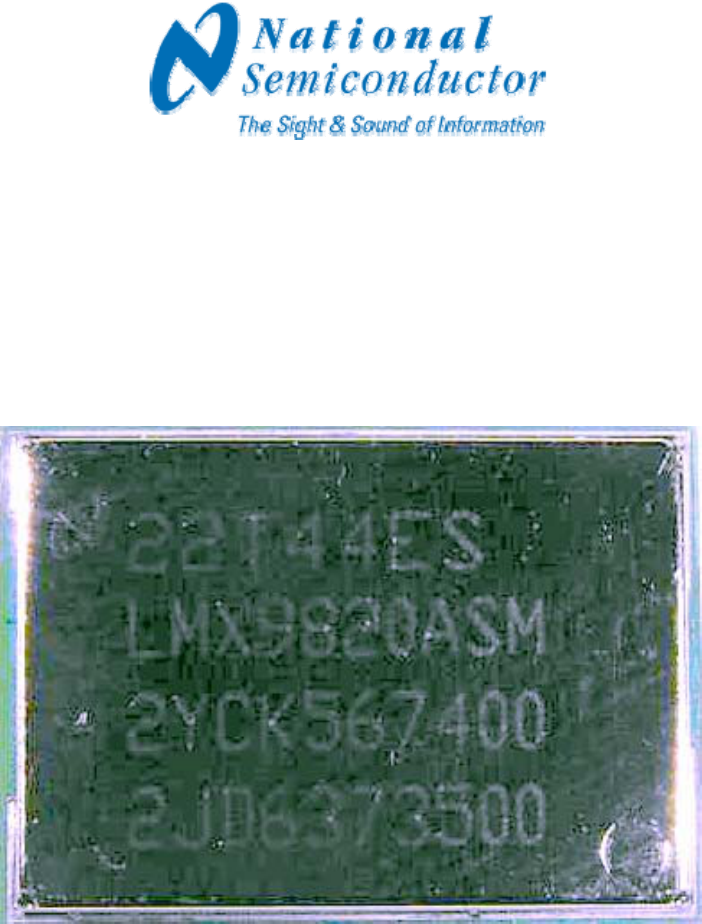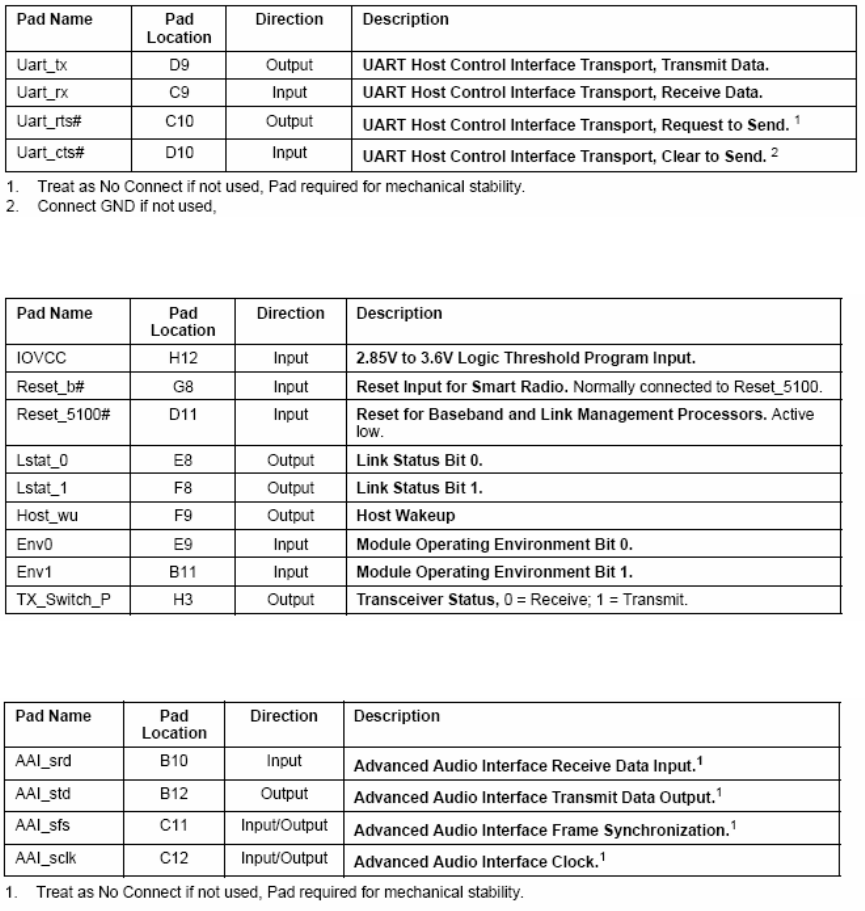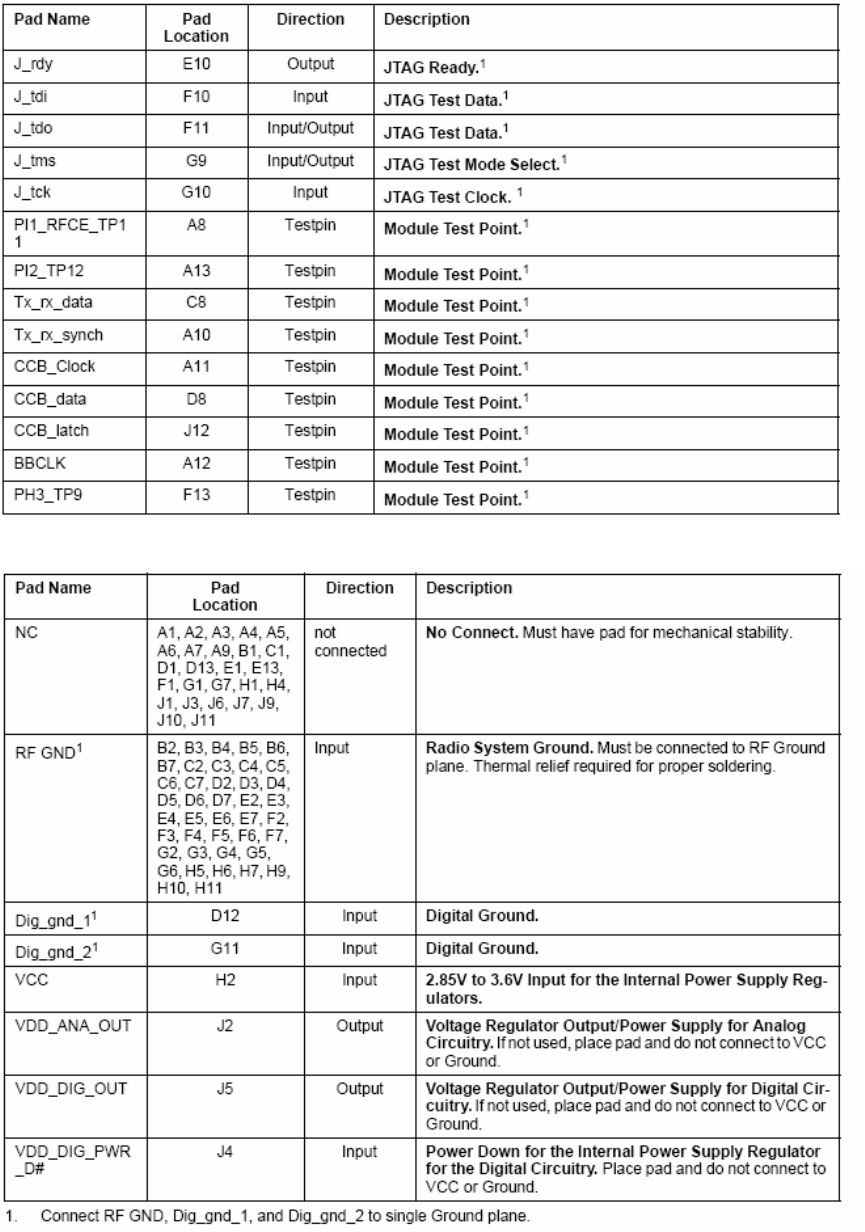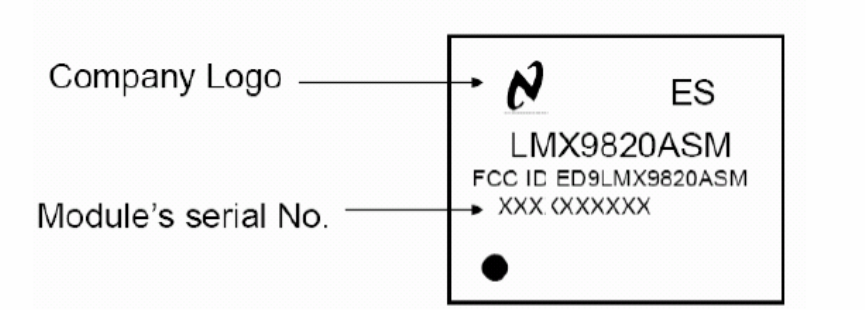Texas Instruments LMX9820ASM Bluetooth Serial Port Module User Manual Integration Manual
Texas Instruments Inc. Bluetooth Serial Port Module Integration Manual
Integration Manual

LMX9820A
BluetoothTM Serial Port Module
Introduction
The purpose of this manual is to explain correct way how to
integrate module LMX9820A to the end product. It includes procedures that shall
assist you to avoid unforeseen problems.
This manual presents information that shows how module and OEM product,
where module integrated, complies with regulations in certain regions. Any
modifications, not expressly approved by the manufacture could void the authority to
operate in these regions.
Content
1. General
2. Module design application
3. Regulatory Compliance.
4. FCC Regulatory Information
4.1 Labelling
4.2 Antenna implementation notes.
4.3 Other regulatory notes for OEM
5. A separate approval.
1.General
This Bluetooth Serial Port Module has to be installed and used in accordance
with the technical description/installation instructions provided by the manufacturer.
This Bluetooth Serial Port Module is intent to be placed on the market in all
States, where the Bluetooth technology and the used frequency band is released. For
detail information concerning type approval of this module (eg. Where this module is
already pre-approved) please contact the authorized local distributor or the
manufacture. The system may only be implemented in the configuration that was
authorized. Note that any changes or modifications to this equipment not expressly
approved by that manufacture could void the user’s authority to operate this
equipment.
2.Module design application
2.1 Model Number
LMX9820A
2.2 Features and Specifications
1) Bluetooth Version 1.1 Qualified.
2) Temperature Range: -40C to +85C
3) Small form factor (10.1mm x 14mm x 1.9mm)
4) Implemented in CMOS technology on FR4 Substrate
5) Operating Frequency Band: 2.402GHz to 2.480GHz
6) Sensitivity: -80dBm typical
7) Output Power: +4dBm maximum (measured at RFinout of LMX5452 micro
module)
8) Operating Temperature: –40 to 85 degree C

9) Storage Temperature: -60 to 150 degree C
10) Operating Voltage: VCC 2.85V ~ 3.6V
11) Power Consumption:
TX burst (peak) is 50mA max
RX burst (peak) is 40mA max
12) Data rate:
Asynchronous: 723kbp/57.6kbps
Synchronous: 433.9kbps/433.9kbps
2.3 Applications area.
PDA, POS Terminals, Data Logging Systems, Audio Gateway applications,
other application.
2.4 Terminal Functions
Table-1
Table-2

Table-3
Table-4
Table-5

Table-6
Table-7

2.5 Software Stack for module and customer side example
3. Declaration about the performed tests.
The National Semiconductor module LMX9820A is wireless data transmission
system. This “Bluetooth” module can be integrated into various end products.
National Semiconductor declares that The LMX9820A complies to Part 15 of the FCC
Rules.
4. FCC regulatory Information.
The Federal Communication Commission Radio Frequency Interference Statement
includes the following paragraph: This equipment has been tested and found to
comply with the limits pursuant to Part 15 of the FCC Rules. These limits are
designed to provide reasonable protection against harmful interference in a
residential installation.
This equipment generates, uses and radiates radio frequency energy and, if not
installed and used in accordance with the instructions, may cause harmful
interference to radio communication.
However, there is no guarantee that interference will not occur in a particular
installation. If this equipment does cause harmful interference to radio or television
reception, which can be determined by turning the equipment off and on, the user is
encouraged to try to correct the interference by one or more of the following
measures:
-Reorient or relocate the receiving antenna.
-Increase the separation between the equipment and receiver.
-Connect the equipment into an outlet on a circuit different from that to which the
receiver is connected.
-Consult the dealer or an experienced radio/TV technician for help.

Changes or modifications not expressly approved by the party responsible
for compliance could void the user's authority to operate the equipment.
4.1 Labeling.
The FCC ID will be placed on top of the product as shown below:
End-products into which the RF module will be installed must wear
the auxiliary label
("Contains FCC ID: XXXXYYYY" or "Contains Transmitter Module LMX9820A FCC
ID ED9LMX9820ASM"
When end-product into which RF module is integrated exceeds size of a PCMCIA
card (approx. 8 x 10 cm) than the FCC Statement
must be placed onto the device:
*******************************************************************
This device complies with Part 15 of the FCC Rules.
Operation is subject to the following two conditions:
(1) this device may not cause harmful interference, and
(2) this device must accept any interference received,
including interference that may cause undesired operation.
***************************************************************
The physical size of the label and font size of the lettering will be dependant on the
size of the final product, but in any case will always be clearly visible to all persons
exposed to the transmitter.
Otherwise this statement can be placed into the users manual of the
end-product.

4.2 Antenna implementation notes.
This transmitter was tested and FCC approved for antenna with maximum gain 0
dBi.
Recommended external antennas are described as following.
Manufacture SN Gain Frequency
Range Temp.
Fractus FR05-S1-N-0-104 0dBi 2400~2500MHz -40C~85C
WPI WPSMLANT001A 0dBi 2400~2500MHz -40C~85C
Murata ANCW12G45SAA110TT1
0dBi 2400~2500MHz -40C~85C
4.3 Other regulatory notes for OEM.
Modular transmitters save manufacturers the time and any related expenses that
would be incurred if a new equipment authorization were needed for the same
transmitter when it is installed in a new device. This means that it can be integrated
into end products without further testing or approval listing. The manufacturer must
state the National Semiconductors part number and product reference in his
literature in order to meet the requirements of the Bluetooth and regulatory. This
should be clearly indicated in the OEM manuals.
The purchaser / integrator ( developer) must satisfy all relevant FCC, SAR, EMC and
Radio regulations which apply to their final product. We believe such parties have the
technical competence to ensure that the systems they deploy continue to comply
with all those rules.
Further information and guidance on this subject and other equipment authorization
matters can be found under
-Regarding FCC regulatory information on the FCC’s website at:
www.fcc.gov/oet/info/database/letters/.
5. A separate approval.
A separate approval of the device into which the module is incorporated is only
required when it cannot be insured that the conditions on the module grant will be
met. The purchaser must satisfy all relevant FCC, directives which apply to their final
product.